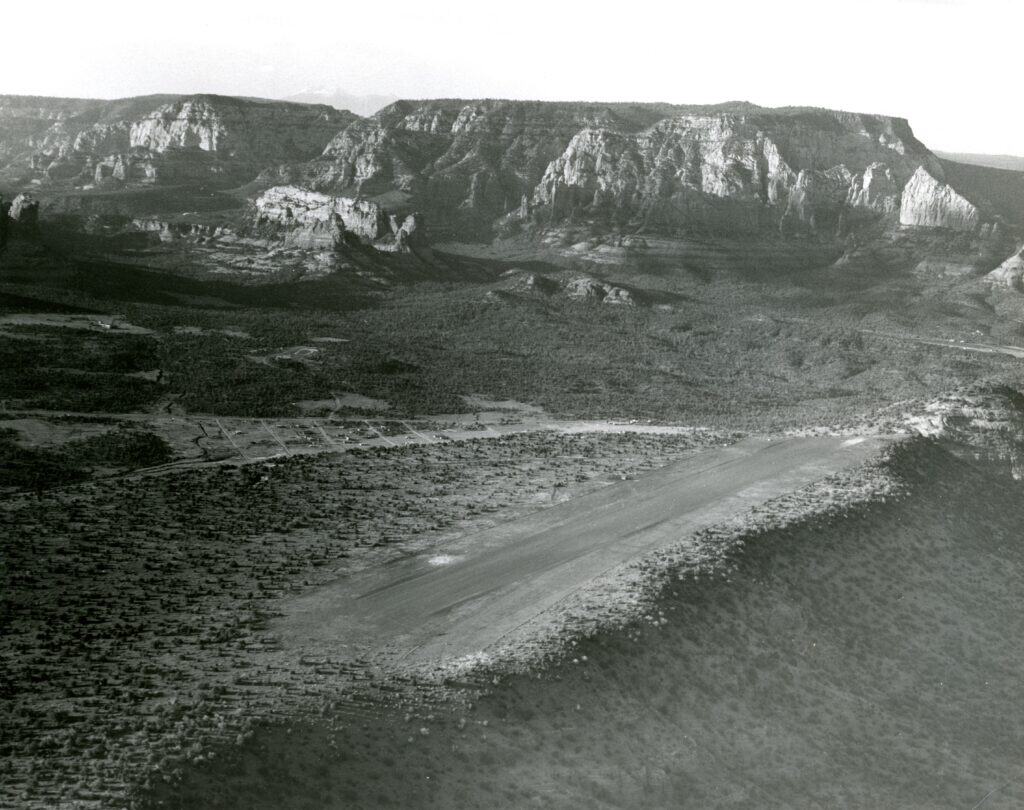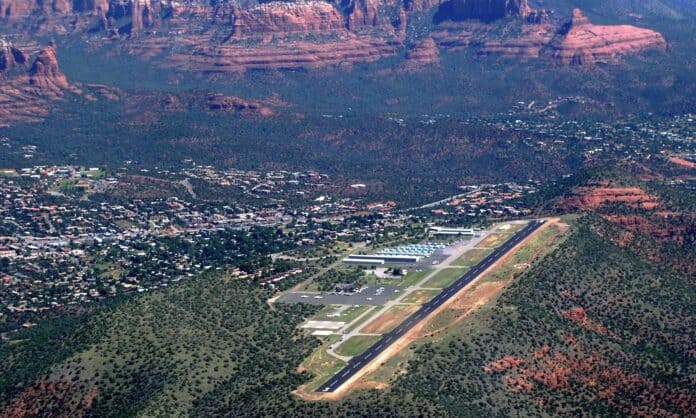We commend the Sedona City Council for its unanimous decision to refrain from taking over the Sedona Airport.
The concept was floated as a potential workaround to the city’s conflict with the Sedona-Oak Creek Airport Authority and, to a lesser extent, Yavapai County, over which government body controlled zoning issues for non-aviation facilities at the airport.
The law is clear: The airport is within the boundaries of Sedona city limits; ergo, zoning questions are within the purview of the city of Sedona, its Planning and Zoning Commission and various city departments. Attempts to usurp or skirt that municipal power by going through the county are made moot by this fact of law.
The airport predates the city of Sedona by some 30 years and is built on land owned by Yavapai County, but when the city incorporated in 1988, jurisdiction over the airport — as well as all the other private and public parcels within the new city limits — was transferred to the new city, with Yavapai County as a property owner.

It’s the reverse of the situation that exists with regard to the Dells and the Sedona Wastewater Treatment facility — the city is a property owner but the land is in Yavapai County’s jurisdiction.
Still, the city considered taking over the airport for a host of reasons, not the least of which was to mitigate complaints made about noise or airplane traffic by Sedona residents.
But as an untowered public airport, local governments have very little leeway to control either factor, as such airports are regulated by rules set by the Federal Aviation Administration. Once an aircraft is a millimeter off the tarmac, the FAA has sole jurisdiction.
It would be difficult, if not impossible, to limit certain types of aircraft from landing at a public airport, and many rules about noise and flight paths that do exist are actually voluntary recommendations. U.S. military aircraft, by far the loudest users of the airport, would also still be able to come and go per FAA and military flight regulations, so Sikorsky UH-60 Black Hawks, Bell Boeing V-22 Ospreys and Bell AH-1 SuperCobras and AH-1Z Vipers would still fly over our skies and land at the Sedona Airport.
Simply put, the city of Sedona has no experience or understanding of how to operate an airport and would either have to bring the operations in-house with a whole new department at a great public cost, or subcontract out operations to a third party with that knowledge and experience — one that would be identical to SOCAA, a nonprofit that already performs the identical task in coordination with Yavapai County.
It’s also not really clear what the benefit would have been to municipal taxpayers other than to declare, “Well, we now own an airport. What now?”
Operations would not have changed, and all the complaints about noise, low-flying helicopters, private jets or other issues SOCAA and airport administrators already deal with would instead fall on the heads of Sedona City Council members, none of whom are aviation experts or versed in FAA laws and regulations and who are already beset with representations from members of the public regarding the other issues over which council has more control.
Politically, we would witness council members making empty promises every two years to limit air traffic or reduce noise that could not be practically achieved. Or, council members would try to write statutes as invalid and illegal as the recently-proposed OHV ban, which is preempted by state law.
Council already has enough to manage — and has difficulty controlling — and a takeover would have saddled future councils with the headache and budgetary burden on municipal taxpayers.
Council wisely took staff’s recommendation and gave it a thumbs-down. Unfortunately for Sedona taxpayers and residents, the city spent thousands on a “professional” study only to figure out what most residents, especially old-timers, could have told them for free.
In the future, if council wants advice on bad ideas, give us a ring here at the newspaper, we’ll be happy to do it for, say, one-tenth the cost of an overpriced consultant. Sorry, General Manager Kyle Larson just said one-quarter the cost. Heck, catch me on a good day, off deadline, and I’ll do “consulting” in 10 minutes for free.
In the end, the status quo remains: The Sedona Airport is a county property run by SOCAA in Sedona’s jurisdiction. Airplanes can arrive and depart in accordance with FAA regulations and the city controls what non-aviation-related buildings are zoned, built or remodeled on the rest of the mesa.
With that settled, Saturday, Oct. 12, will be the annual Wings and Wheels event at the Sedona Airport, run by SOCAA and the Sedona Car Club, offering up-close looks at vintage planes, military aircraft and classic cars. We hope to see you all there.



















